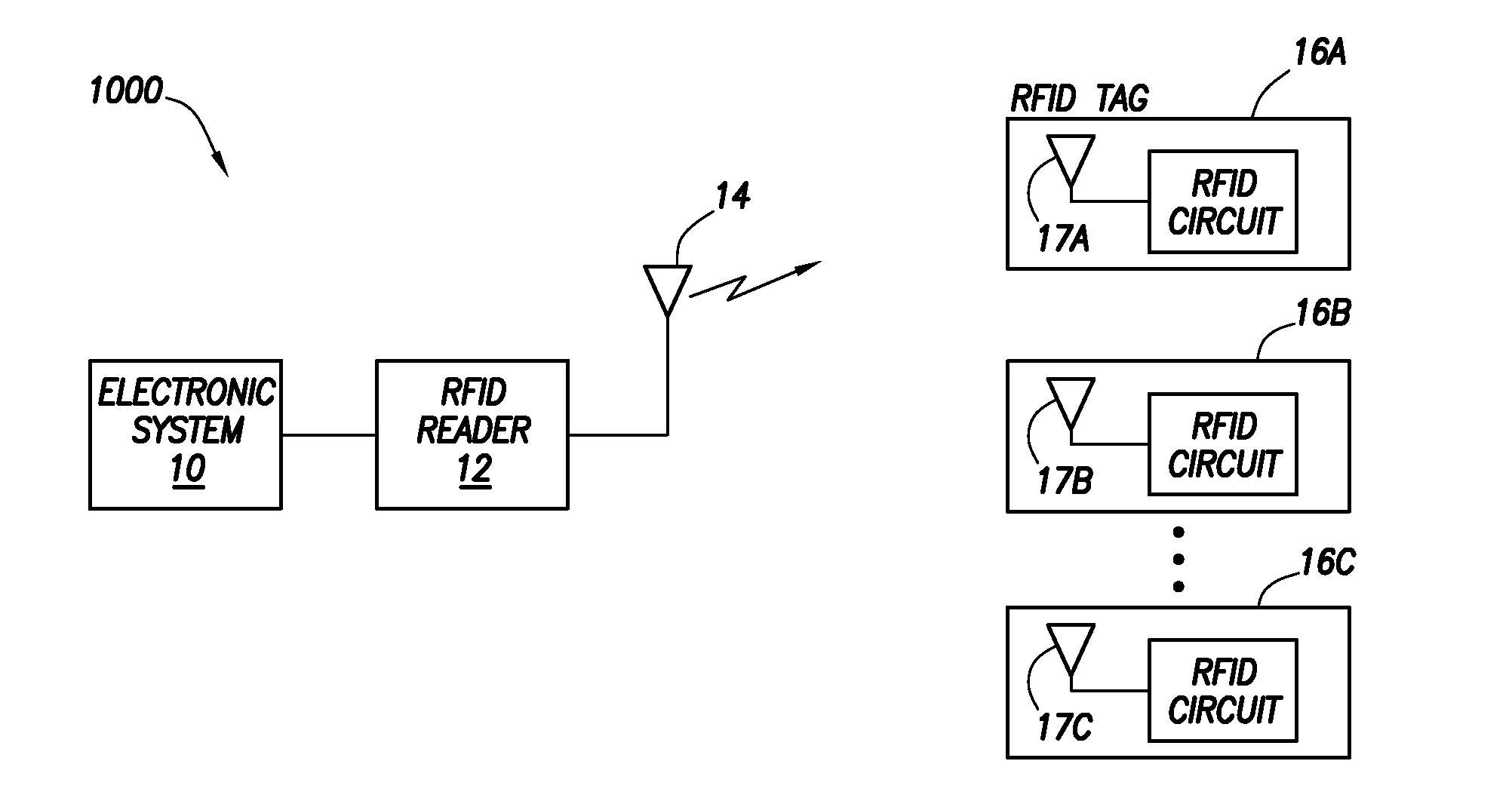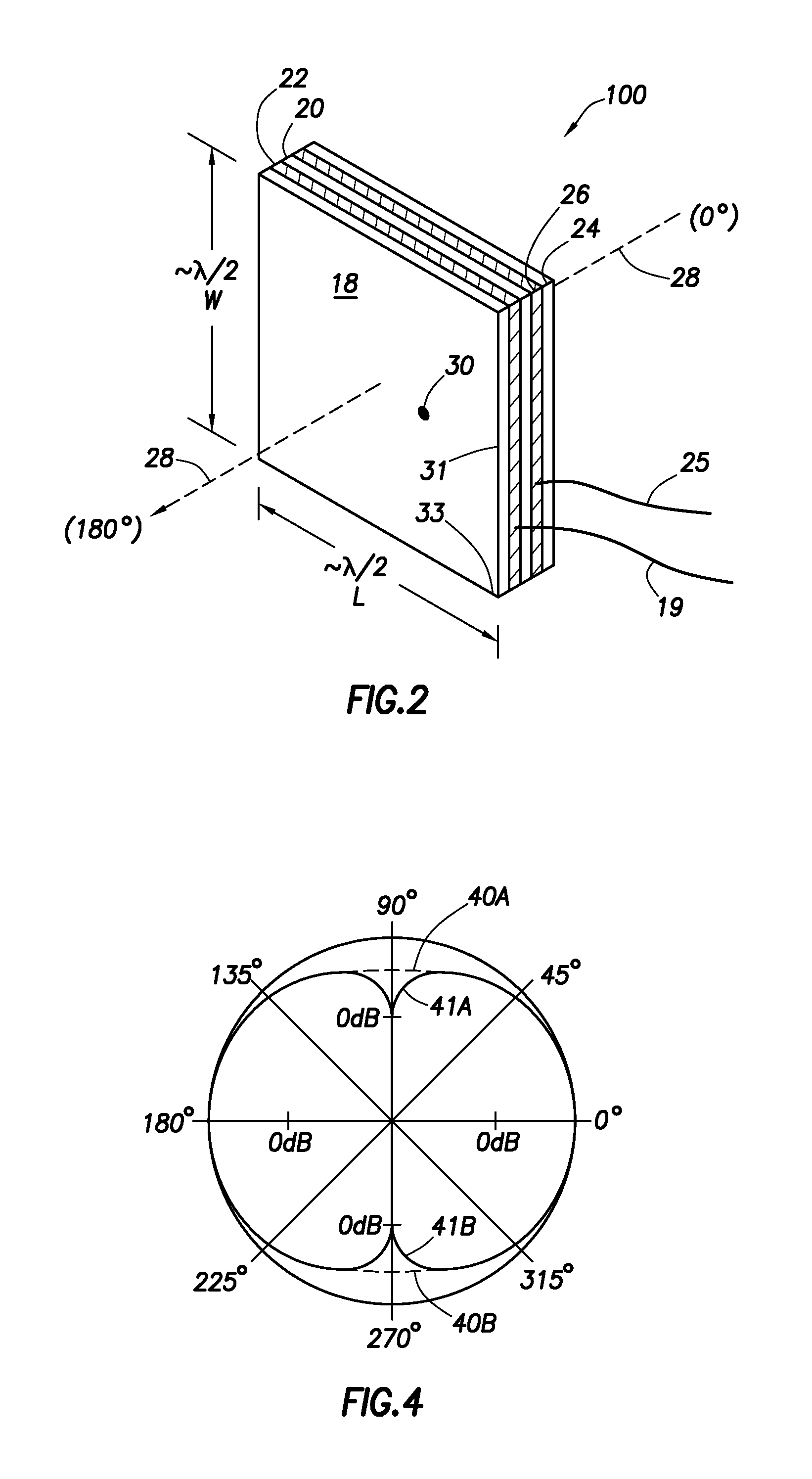Methods and systems of tagging objects and reading tags coupled to objects
a technology of object tagging and reading tags, applied in the field of methods and systems of tagging objects and reading tags coupled to objects, can solve the problems of blocking the ability of a tag reader to read the rfid tag, slow adoption of rfid tags in cattle industry,
- Summary
- Abstract
- Description
- Claims
- Application Information
AI Technical Summary
Benefits of technology
Problems solved by technology
Method used
Image
Examples
Embodiment Construction
[0020]The various embodiments disclosed herein are discussed in the context of radio frequency identification (RFID) tags; however, the systems and methods discussed herein have application beyond RFID tags to other types of radio frequency technologies. The discussion of any embodiment in relation to RFID tags is meant only to be illustrative of that embodiment, and not intended to intimate that the scope of the disclosure, including the claims, is limited to that embodiment.
[0021]FIG. 1 illustrates a system 1000 in accordance with at least some embodiments. In particular, system 1000 comprises an electronic system 10 coupled to a RFID reader 12. In some embodiments, electronic system 10 comprises a computer system. By way of antenna 14, the RFID reader 12 communicates with one or more RFID tags 16A-16C (each having antenna 17A-17C as shown) proximate to the RFID reader (i.e., within communication range). The RFID reader 12 may be equivalently referred as an interrogator. The RFID ...
PUM
 Login to View More
Login to View More Abstract
Description
Claims
Application Information
 Login to View More
Login to View More - R&D
- Intellectual Property
- Life Sciences
- Materials
- Tech Scout
- Unparalleled Data Quality
- Higher Quality Content
- 60% Fewer Hallucinations
Browse by: Latest US Patents, China's latest patents, Technical Efficacy Thesaurus, Application Domain, Technology Topic, Popular Technical Reports.
© 2025 PatSnap. All rights reserved.Legal|Privacy policy|Modern Slavery Act Transparency Statement|Sitemap|About US| Contact US: help@patsnap.com



